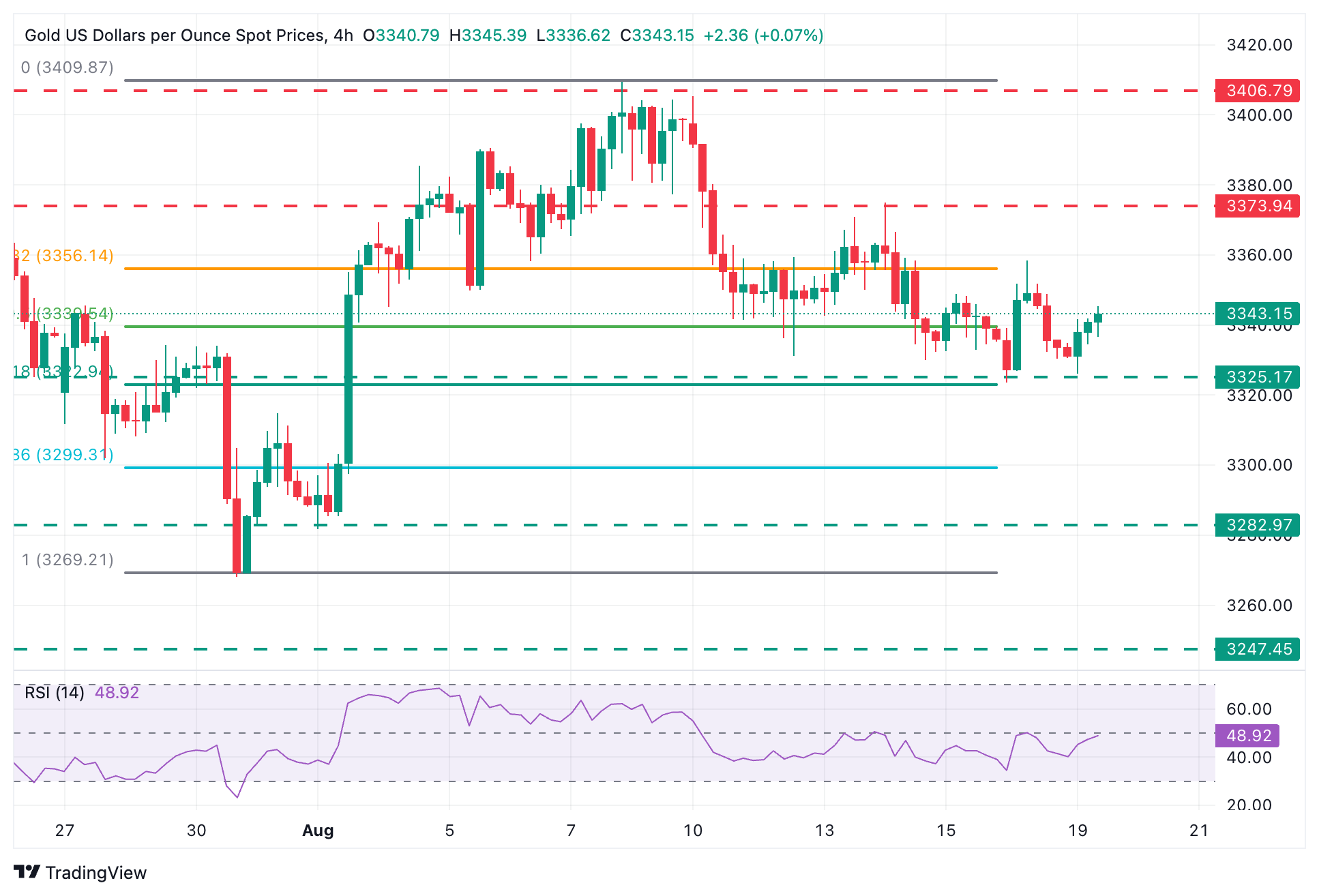Gold Price Forecast: XAU/USD picks up but remains within range below $3,360
- Gold bounces from $3,325 lows but remains trapped within the last few days' range,
- A softer US Dollar is providing some support for Gold, but the positive risk sentiment keeps weighing on precious metals.
- XAU/USD should break resistances at $3,360 and $3,365 to hint at the end of the corrective phase.
Gold (XAU/USD) is trading with a moderate positive bias on Tuesday, trading at $3,340 area after bouncing from $3,325 lows earlier on the day. The broader trend, however, remains bearish from last week’s highs above $3,400 with price action trapped in the last few days’ range, below $3,360.
The precious metal is drawing some support from a softer US Dollar amid a moderate geopolitical optimism after Monday’s meeting between Trump and Zelenskyy in the White House. Trading volumes, however, remain at relatively low levels amid the summer holiday season in Europe and North America.
Technical analysis: Gold has found support $3,325

From a technical perspective, XAU/USD is bouncing up from the 61.8% Fibonacci retracement of the early August rally, at $3,355. This is a common target for corrections, but the pair is lacking upside momentum as shown by the 4-hour RSI, which remains flat around the 50 level.
The pair would need to break resistances at $3,360 and $3,375, on August 18 and August 14, respectively, to give some hope for bulls for a retest of the August 8 high, at $3,410.
On the downside, a confirmation below Tuesday’s low, at $3,325, would bring the July 29 low and July 31 highs, at the $3,305-$3,315 area back to the bears’ focus. Further down, the next target would be the August 1 low, at $3,282.
Gold FAQs
Gold has played a key role in human’s history as it has been widely used as a store of value and medium of exchange. Currently, apart from its shine and usage for jewelry, the precious metal is widely seen as a safe-haven asset, meaning that it is considered a good investment during turbulent times. Gold is also widely seen as a hedge against inflation and against depreciating currencies as it doesn’t rely on any specific issuer or government.
Central banks are the biggest Gold holders. In their aim to support their currencies in turbulent times, central banks tend to diversify their reserves and buy Gold to improve the perceived strength of the economy and the currency. High Gold reserves can be a source of trust for a country’s solvency. Central banks added 1,136 tonnes of Gold worth around $70 billion to their reserves in 2022, according to data from the World Gold Council. This is the highest yearly purchase since records began. Central banks from emerging economies such as China, India and Turkey are quickly increasing their Gold reserves.
Gold has an inverse correlation with the US Dollar and US Treasuries, which are both major reserve and safe-haven assets. When the Dollar depreciates, Gold tends to rise, enabling investors and central banks to diversify their assets in turbulent times. Gold is also inversely correlated with risk assets. A rally in the stock market tends to weaken Gold price, while sell-offs in riskier markets tend to favor the precious metal.
The price can move due to a wide range of factors. Geopolitical instability or fears of a deep recession can quickly make Gold price escalate due to its safe-haven status. As a yield-less asset, Gold tends to rise with lower interest rates, while higher cost of money usually weighs down on the yellow metal. Still, most moves depend on how the US Dollar (USD) behaves as the asset is priced in dollars (XAU/USD). A strong Dollar tends to keep the price of Gold controlled, whereas a weaker Dollar is likely to push Gold prices up.

